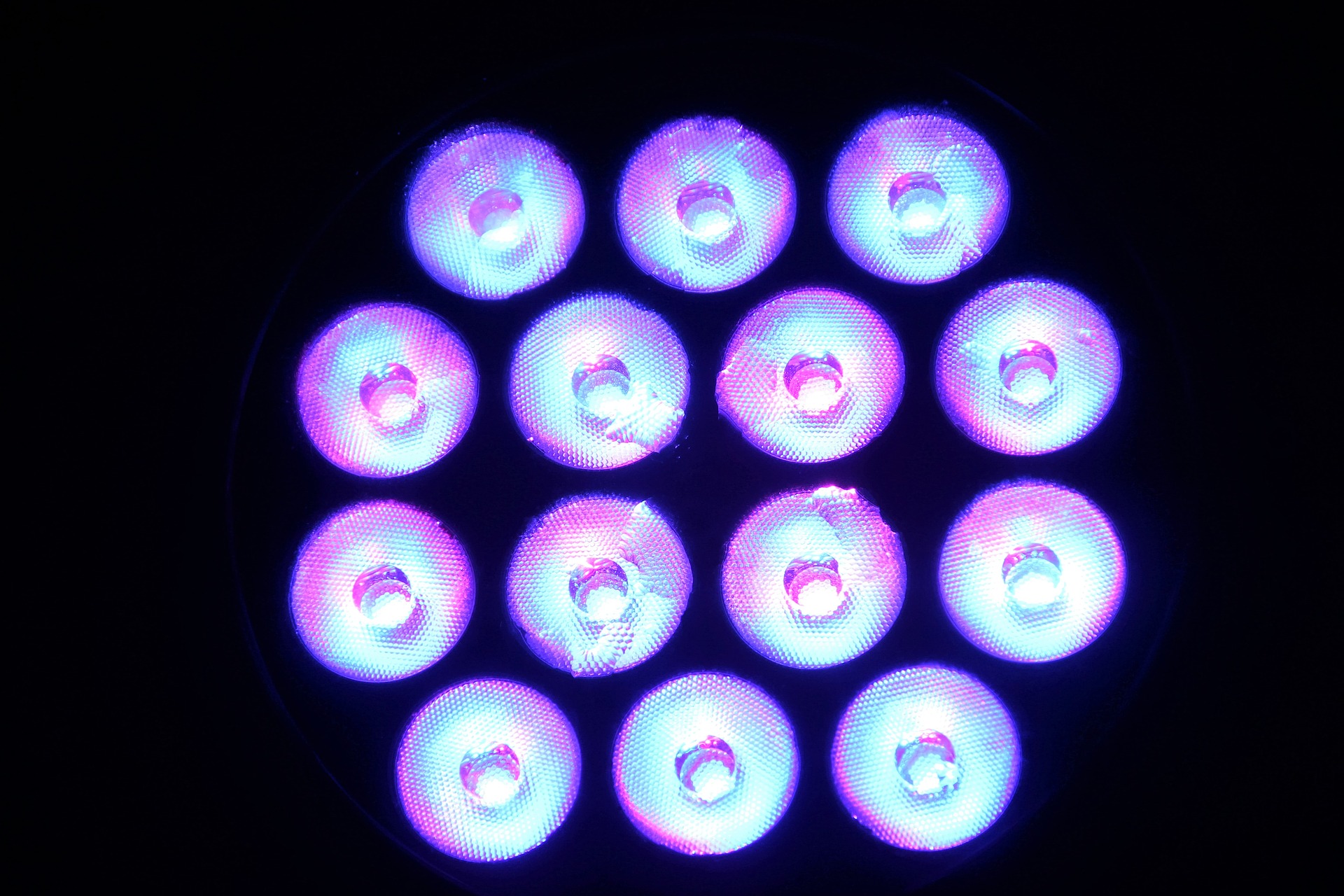Note : This page has been translated into English from French by a machine translation tool
Imagine… And what if the light bulb used to light your living room also served as a means of connecting to the Internet. No, you’re not dreaming. That’s the promise of Li-Fi. The term Li-Fi, for Light Fidelity, is opposed to the well-known term Wi-Fi – for Wireless Fidelity – which refers to the transmission of data from the Internet or between your home appliances by electromagnetic waves. Li-Fi is therefore a means of transmitting this data by light and uses a property of LED bulbs that are able to switch – understand turn on and off intermittently – a very large number of times per second allowing theoretical data rates at least equivalent or even higher than those we know today with our mobile devices connected to our Internet modem.
The principle is simple. It works, as with our traditional means of communication, with a transceiver system. You have understood it, the transmitter will be your light bulb, but it can also be a transmitter of infrared rays, therefore invisible to the naked eye, and this for example, in order to avoid in the long run the need to turn on your light in daylight in order to have a network. Your receiver will be a small module connected to your computer or your tablet which, placed under or in front of this light source, will allow you to receive the signal. As mentioned earlier your light bulb will turn on and off intermittently to transmit the signal. Be reassured, it will do so far too quickly for you to notice.
As you may know, computer data is transmitted in binary, i.e. with sequences of 0 and 1. In this case, the 1 will correspond to a light bulb being on, i.e. the receiver receiving the light signal, and the 0 to a light bulb being off. Of course, do not intend to get rid of your box. This system will always need a router to ensure communication with the network. On the other hand, you will always be able to communicate in both directions by sending data over the network. The uplink will be provided by an infrared transmitter.
This technology, which is not yet fully developed, still has some drawbacks. First of all, the quality of signal reception is very dependent on the position of the transmitter in relation to the receiver. Indeed, your output will drop significantly if you are too far away from your light source. It is therefore reserved for a very sedentary use of the network unlike Wi-Fi where the propagation of waves allows for greater flexibility. On the other hand, it still requires a transceiver, more or less cumbersome and annoying, connected to its nomadic device to operate.
But this technology has many advantages and could well prove to be revolutionary in the way we benefit from Internet access. Among them we can note :
- Security :
This was a disadvantage because the range of the signal and its stability if you want to be able to move around is not optimal, but on the other hand it guarantees a much better level of security than Wi-Fi connections. Indeed, you may have noticed that you were receiving the wireless signal from your neighbor’s box. And you don’t need to be in an apartment to do this. This is also the case when you live in a detached house in the countryside when the distance between the two houses is a few dozen meters at most. This means that with high-power antennas it is possible to pick up the signal and therefore the data that you exchange with the network at a distance where the pirate will not be worried to act. The light does not pass through walls, so it becomes possible to surf the internet with improved security. Even from one room to another, the signal can no longer be intercepted.
- The reduction of potential effects on the human body :
Not to mention the hypothetical harmfulness of Wi-Fi and more generally electromagnetic waves to the human body which is a subject of controversy, we know that some people are recognized as electrosensitive, understand sensitive to electromagnetic waves. Access to the Internet through this means can be an alternative to reduce their exposure to these waves.
- The extension of the availability areas :
The use of Wi-Fi and more generally electromagnetic waves is regulated in certain places such as airplanes or hospitals. The implementation of light-based internet connection devices could again be a serious alternative to offer this service by circumventing the disadvantages that may arise from the emission of waves in these places.
- The desaturation of the network :
You have probably already experienced this. If you connect to a public wireless network, you are subject to slowdowns that are proportional to the number of users on that same network. When the demand is too high, it saturates the bandwidth. At times, you may not even be able to connect. Installing li-fi in high-demand areas could solve this problem in two different ways.
The first one, one can imagine providing certain buildings with as many access points as necessary. Your connection in one room with a given light bulb will not saturate the connection of someone else in the next room who will be connected to the network via another light access point.
The second is that it can be combined with traditional Wi-Fi access without altering the bandwidth. If we go back to our previous example, you can be connected to the network via li-fi access while your neighbor in the same room or in the next room will be connected to the internet via a parallel wi-fi access.
- Reduction of interference :
As we know it today, more and more devices are operating via wireless networks. Interference can therefore occur when in the same field of radiation waves, several devices try to communicate on the same frequencies, understand the same wavelengths. Since the spectrum of usable electromagnetic wavelengths is weaker than that of light waves, the risk of interference is therefore reduced when using light waves to ensure communication between devices. This is without counting on the fact that it will also take time for the large-scale deployment of this technology. So much time during which our expensive devices will be quiet.
- Simplifying the provision of specific and localized content :
As we have seen, the field of action of data transmission via light is much more restricted. This is because the data transmitted by a light point on the ceiling can only be picked up when it is within its illumination range. It is therefore conceivable that it will be possible in the future to offer specific content in tourist and cultural locations at specific locations. When you visit a castle or an aquarium, for example, content related to the area in which you are located is offered to you either in the form of a poster or a panel or in the form of a digital terminal. Do you see where we’re going with this ? It would therefore be possible to offer this content on these zones via a light point captured by your mobile device in order to display this content on your own device without it being available in another place where it is not relevant.
In short, li-fi is a new way of connecting to the internet that may well be revolutionary in the future. The applications are numerous and have probably not all been discovered yet. This technology will be optimal as soon as transmit-receive systems are integrated into mobile devices and there will be a simple way to turn one’s home LED lighting into a transmit terminal. It could prove to be a good way to provide network access in places where we remain sedentary during the time of our work, especially in businesses or at home. We can also hope to deploy it in places where the network can easily become saturated, such as at trade shows for example. Finally, it could well become the most popular solution for providing Internet access on airplanes or in hospitals, some of which have already made this choice.









… [Trackback]
[…] Here you can find 36285 additional Information to that Topic: soft-hardware.fr/en/li-fi-or-how-to-connect-to-the-internet-thanks-to-your-light-bulbs/ […]
Your article helped me a lot, is there any more related content? Thanks!
… [Trackback]
[…] Find More on to that Topic: soft-hardware.fr/en/li-fi-or-how-to-connect-to-the-internet-thanks-to-your-light-bulbs/ […]
… [Trackback]
[…] Find More here to that Topic: soft-hardware.fr/en/li-fi-or-how-to-connect-to-the-internet-thanks-to-your-light-bulbs/ […]
… [Trackback]
[…] Read More here on that Topic: soft-hardware.fr/en/li-fi-or-how-to-connect-to-the-internet-thanks-to-your-light-bulbs/ […]
… [Trackback]
[…] Read More Information here to that Topic: soft-hardware.fr/en/li-fi-or-how-to-connect-to-the-internet-thanks-to-your-light-bulbs/ […]
… [Trackback]
[…] There you can find 30070 additional Information to that Topic: soft-hardware.fr/en/li-fi-or-how-to-connect-to-the-internet-thanks-to-your-light-bulbs/ […]
… [Trackback]
[…] Read More on that Topic: soft-hardware.fr/en/li-fi-or-how-to-connect-to-the-internet-thanks-to-your-light-bulbs/ […]
… [Trackback]
[…] Find More to that Topic: soft-hardware.fr/en/li-fi-or-how-to-connect-to-the-internet-thanks-to-your-light-bulbs/ […]
… [Trackback]
[…] Find More on on that Topic: soft-hardware.fr/en/li-fi-or-how-to-connect-to-the-internet-thanks-to-your-light-bulbs/ […]
… [Trackback]
[…] There you can find 71131 additional Info to that Topic: soft-hardware.fr/en/li-fi-or-how-to-connect-to-the-internet-thanks-to-your-light-bulbs/ […]
… [Trackback]
[…] Info to that Topic: soft-hardware.fr/en/li-fi-or-how-to-connect-to-the-internet-thanks-to-your-light-bulbs/ […]
… [Trackback]
[…] Information to that Topic: soft-hardware.fr/en/li-fi-or-how-to-connect-to-the-internet-thanks-to-your-light-bulbs/ […]
… [Trackback]
[…] Here you will find 42776 additional Information to that Topic: soft-hardware.fr/en/li-fi-or-how-to-connect-to-the-internet-thanks-to-your-light-bulbs/ […]
… [Trackback]
[…] Info to that Topic: soft-hardware.fr/en/li-fi-or-how-to-connect-to-the-internet-thanks-to-your-light-bulbs/ […]
… [Trackback]
[…] Here you will find 1651 additional Info to that Topic: soft-hardware.fr/en/li-fi-or-how-to-connect-to-the-internet-thanks-to-your-light-bulbs/ […]
… [Trackback]
[…] Read More on that Topic: soft-hardware.fr/en/li-fi-or-how-to-connect-to-the-internet-thanks-to-your-light-bulbs/ […]
… [Trackback]
[…] Read More Information here to that Topic: soft-hardware.fr/en/li-fi-or-how-to-connect-to-the-internet-thanks-to-your-light-bulbs/ […]
… [Trackback]
[…] Read More Information here to that Topic: soft-hardware.fr/en/li-fi-or-how-to-connect-to-the-internet-thanks-to-your-light-bulbs/ […]
… [Trackback]
[…] Info on that Topic: soft-hardware.fr/en/li-fi-or-how-to-connect-to-the-internet-thanks-to-your-light-bulbs/ […]
… [Trackback]
[…] Info on that Topic: soft-hardware.fr/en/li-fi-or-how-to-connect-to-the-internet-thanks-to-your-light-bulbs/ […]
… [Trackback]
[…] Find More on that Topic: soft-hardware.fr/en/li-fi-or-how-to-connect-to-the-internet-thanks-to-your-light-bulbs/ […]
… [Trackback]
[…] Read More on that Topic: soft-hardware.fr/en/li-fi-or-how-to-connect-to-the-internet-thanks-to-your-light-bulbs/ […]
… [Trackback]
[…] Find More to that Topic: soft-hardware.fr/en/li-fi-or-how-to-connect-to-the-internet-thanks-to-your-light-bulbs/ […]
… [Trackback]
[…] Find More to that Topic: soft-hardware.fr/en/li-fi-or-how-to-connect-to-the-internet-thanks-to-your-light-bulbs/ […]
… [Trackback]
[…] Read More on that Topic: soft-hardware.fr/en/li-fi-or-how-to-connect-to-the-internet-thanks-to-your-light-bulbs/ […]
… [Trackback]
[…] Here you can find 255 more Info on that Topic: soft-hardware.fr/en/li-fi-or-how-to-connect-to-the-internet-thanks-to-your-light-bulbs/ […]
… [Trackback]
[…] Info on that Topic: soft-hardware.fr/en/li-fi-or-how-to-connect-to-the-internet-thanks-to-your-light-bulbs/ […]
… [Trackback]
[…] Read More to that Topic: soft-hardware.fr/en/li-fi-or-how-to-connect-to-the-internet-thanks-to-your-light-bulbs/ […]
… [Trackback]
[…] Info on that Topic: soft-hardware.fr/en/li-fi-or-how-to-connect-to-the-internet-thanks-to-your-light-bulbs/ […]
… [Trackback]
[…] Here you can find 51492 additional Information to that Topic: soft-hardware.fr/en/li-fi-or-how-to-connect-to-the-internet-thanks-to-your-light-bulbs/ […]
… [Trackback]
[…] Find More Information here to that Topic: soft-hardware.fr/en/li-fi-or-how-to-connect-to-the-internet-thanks-to-your-light-bulbs/ […]